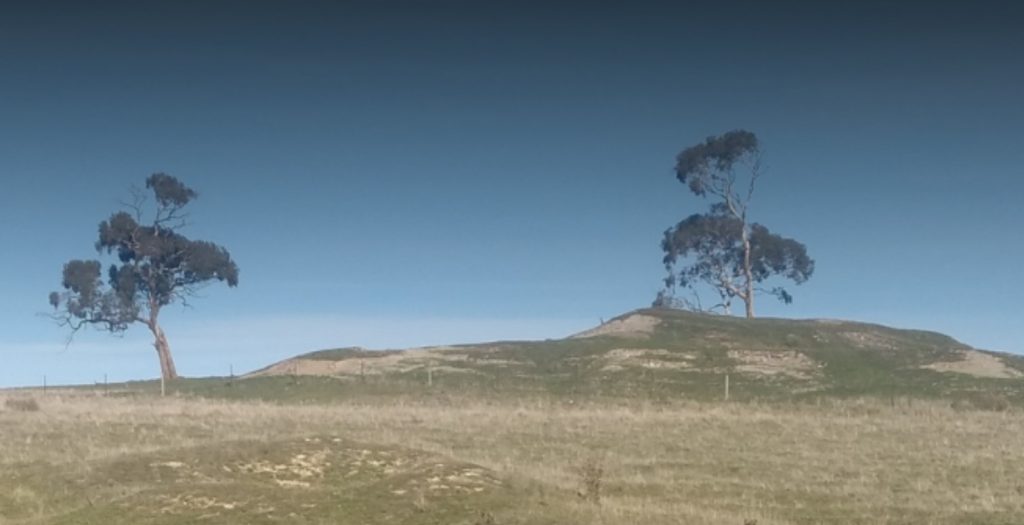Great Pacific Gold drills 166.35 g/t gold over 5 metres at Lauriston, Australia

Great Pacific Gold Corp.’s [TSXV-GPAC; OTCQX-FSXLF; Germany-4TU] recent drilling has discovered a high-grade mineralized zone at the Comet prospect within the company’s 100%-owned Lauriston gold project in Victoria, Australia. Reverse Circulation (RC) hole CRC07 intersected 5m at 166.35 g/t gold from 95 metres, including 2 metres at 413 g/t gold from 96 metres, including 1 metre at 468 g/t gold and 1 metre at 358 g/t gold.
Highlights: Drillhole CRC07 intersected 5 metres at 166.35 g/t gold, including 2 metres at 413 g/t gold from 95 metres.
Highest grade hole ever reported from the Lauriston Project, which is immediately south of the Agnico Eagle Fosterville Mine tenements.
This discovery hole (CRC07), drilled at the Comet Prospect on the Lauriston Project, is a deeper follow up to a previous shallower hole that ended in gold mineralization but was abandoned (CRC14) due to drill rig capability.
The Comet Prospect, where the high-grade zone discovery hole was drilled, has epizonal characteristics of Au-As-Sb with geology similar to the Fosterville Mine deposit. The west dipping Comet fault zone is hosted by Ordovician slates and sandstones, which are folded in a series of north south striking concertina folds. This high-grade discovery is near the Comet Anticline that has been mapped in the area, which is a similar structural setting of the mineralization present at Fosterville.
During the drilling of CRC07 while collecting reference chip samples, visible gold was observed in the chip trays for these two high-grade intervals.
The November 2023 drilling program targeted three prospects: Trojan, O’Connell’s and Comet with deeper RC drilling than previously conducted, to investigate the mineralization with depth, as well as the structural setting of key locations, as part of a study of the epizonal mineralization model based on Fosterville.
Four holes were drilled for 736.6 metres, with two holes drilled at Trojan within the Blackwood exploration licence. At Trojan one hole failed to reach the target and the other was completed with a diamond drilling tail completed at 254.6 metres (assays pending). The O’Connell’s Find prospect drill hole intersected mineralization in the hanging wall of the main dyke. At Comet the importance of the anticline to the west dipping mineralized zone was seen as a key target for high grade gold as part of the epizonal model.
At the Comet prospect, Great Pacific Gold drilled 15 reverse circulation holes totaling 1434 metres, of which 14 holes were drilled in 2022 and one hole drilled for this 2023 program. The prospect is approximately 1km in strike length based upon anomalous soil geochemistry and the presence of old gold workings. The current drill program followed up on a 2022 program that tested for shallow gold mineralization at the southern end of the Comet prospect. During the 2022 program, Great Pacific Gold successfully intersected gold mineralization in a significant number of drill holes. Nearby CRC07, an earlier reverse circulation drill hole CRC014 ended in gold mineralization at 90m due to drill rig depth limitations. Drillhole CRC014 also intersected 10 metres at 0.94 g/t gold from 77 metres associated with disseminated sulphides. An additional drill program is being designed.
GPAC CEO, Bryan Slusarchuk, stated, “Over the past three months, GPAC has been busy preparing for Q1 2024 drilling in PNG. We have been organizing road rehabilitation works and drill contracts while assessing and digitizing historic data in preparation for exploration. We have also recently announced the grant of the Kesar Creek exploration license, which is a 130 km2 land package directly to the northwest and contiguous with the K92 Mining tenements. In the meantime, concurrent with this work in PNG, GPAC was drilling a final hole for 2023 in Australia to test a belief that Rex Motton and the technical team held, being there was serious potential for a high grade hit at Comet if we were to drill near the Comet Anticline, which had been identified based on previous GPAC work in the area. This final hole planned for 2023 has intersected very high gold grades, as described in this news release today, in a similar structural setting to what is seen at the Fosterville Mine and we will now design a plan as to how best advance this new high grade discovery.”
In PNG, Great Pacific Gold recently acquired a significant 2,166 km2 mineral exploration land package in PNG. The land package comprises of exploration licenses (EL) and exploration license applications (ELA). It includes both early-stage and advanced-stage exploration targets with high-grade epithermal vein and porphyry-style mineralization present.
The Arau Project consists of one exploration license, EL 2651, and one exploration license application, ELA 2715, located in the Kainantu region, and includes the Mt. Victor Prospect, where previous drilling found a multiple phase intrusion complex hosting copper and gold mineralization.
The Wild Dog Project consists of one granted exploration license, EL 2761, and one exploration license application, ELA 2516, located on the island of New Britain and about 50 km southwest of Rabaul and Kokopo, PNG.
The Kesar Creek Project consists of one exploration license, EL 2711, and is contiguous with the K92 Mining Inc. tenements.
In Australia, Great Pacific Gold began with two, 100%-owned, high-grade gold projects called the Lauriston and Golden Mountain Projects, and has since acquired a large area of granted and application tenements containing further epizonal (low-temperature) high-grade gold mineralization and associated intrusion-related gold mineralization all in the state of Victoria, Australia.
All GPAC’s properties in Australia are 100% owned and have had historical gold production from hard rock sources despite limited modern exploration and drilling.
